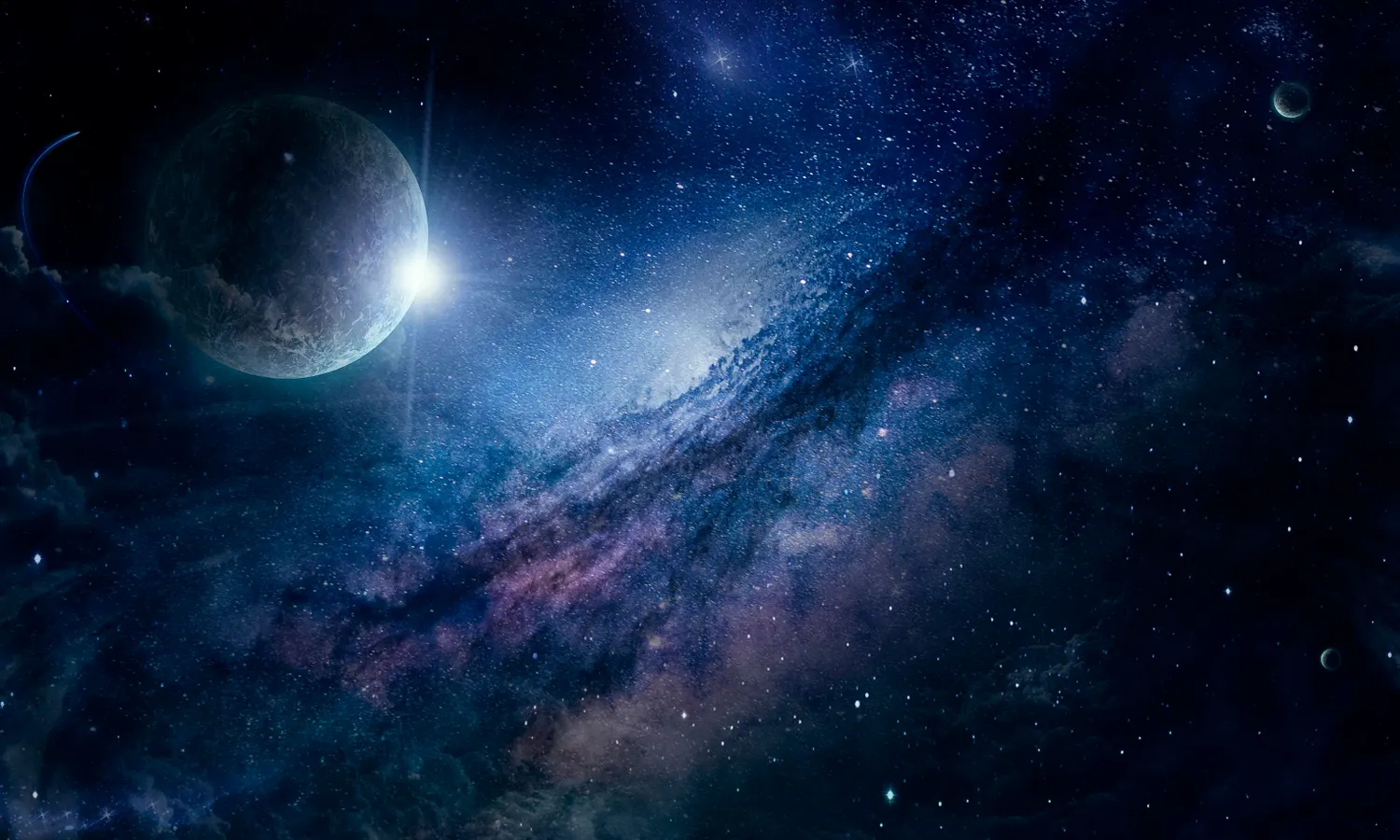By Curtin University,David Bressan,Senior Contributor
Copyright forbes

Milky Way, shining stars, planet, space from satellite, abstract illustration
The chemistry of crystals in some of Earth’s oldest rocks may capture the rhythm of meteorite impacts during our solar system’s passage through space and time.
Lead researcher Professor Chris Kirkland, from the Timescales of Mineral Systems Group within Curtin’s Frontier Institute for Geoscience Solutions in the School of Earth and Planetary Sciences, says a yet to publish study provides new evidence linking Earth’s ancient geological record with the large-scale structure of the Milky Way.
“Tiny, durable minerals called zircon crystals provided a unique archive of Earth’s interaction with the galaxy,” Professor Kirkland explains.
As our solar system, together with an estimated 100 to 400 billion other star systems, orbits around the center of the galaxy, it passes through the galaxy’s spiral arms, regions rich in interstellar dust and gases. Traces of this material reach Earth and eventually are trapped inside forming minerals.
One of the toughest minerals on Earth is zircon (ZrSiO₄). In 2014, a 4.404 billion-year-old zircon from the Jack Hills region, Australia, was announced to be the oldest known crystal on Earth, with Earth being approximately 4.51 billion years old. Zircon crystallizes from molten magma at a high temperature, and after cooling, its structure preserves the chemical signature of the melt from which it formed.
“By looking at chemical changes in zircon crystals and comparing them with maps of gas in the Milky Way, we saw the changes line up with times that our Solar System passed through the galaxy’s spiral arms, which are densely packed with stars and gas.”
The first few million years, Earth was covered entirely by a magma ocean, forming a (geologically speaking quite boring) basaltic crust characterized by low levels of silicon and high levels of iron and magnesium. Complex igneous rocks, like granite or carbonatite, appear only later in the geological record, and geologists are not sure why.
MORE FOR YOU
Today’s rich variety of igneous rocks forms thanks to complex processes, including remelting, adsorption, and exchange of chemical elements, happening in Earth’s crust and driven by plate tectonics. But over 4 billion years ago, there was no plate tectonics, and Earth was chemically much more simple.
Kirkland’s research offers an intriguing solution for the “granite problem,” as it was dubbed by early geologists.
“In these crowded regions, extra gravitational forces may have disturbed icy comets at the edge of our Solar System, knocking some onto paths that sent them crashing into Earth. The resulting impacts released enormous energy, melting parts of Earth’s surface and producing more complex magmas, especially when interacting with water-rich environments.”
“Our research reveals that Earth’s geological evolution cannot be understood in isolation from the broader galactic environment,” Professor Kirkland concludes.
The full study, “From the grain to galactic scale; Milky-Way neutral hydrogen and terrestrial zircon oxygen support coupling of astrophysical and geological processes over deep-time,” will be published in the journal Phys. Rev. Research and can be found here.
Additional material and interviews provided by Curtin University.
Editorial StandardsReprints & Permissions



